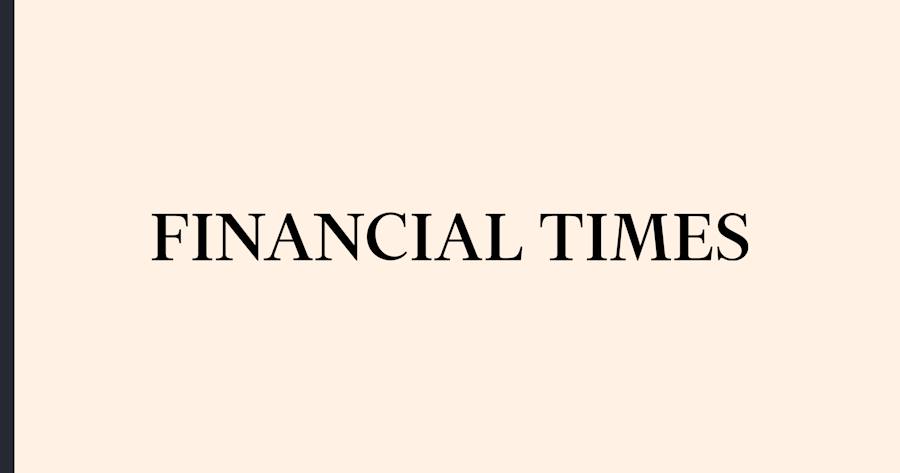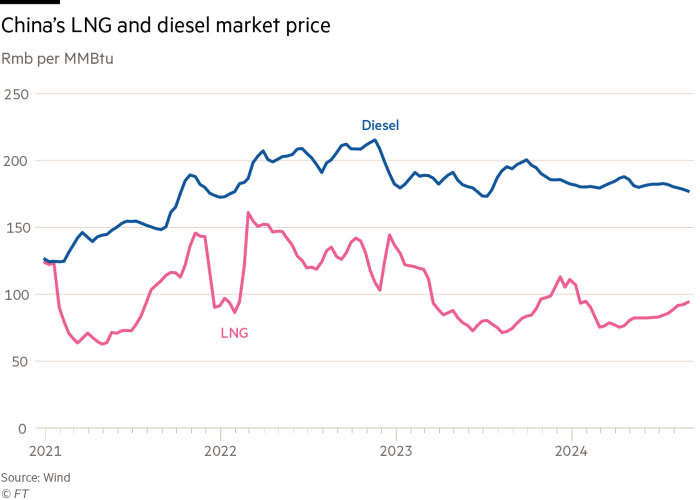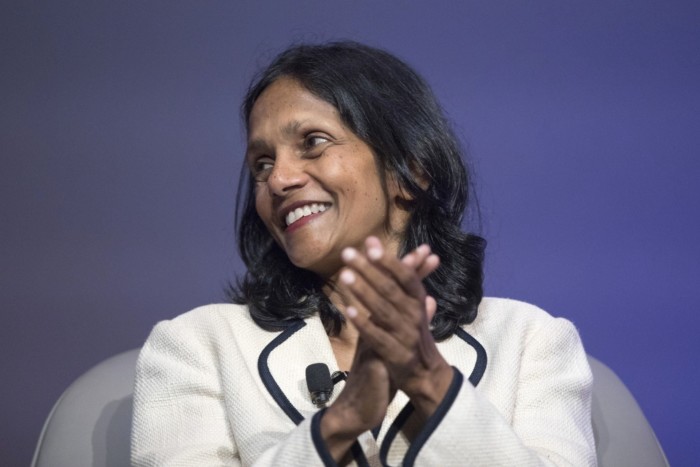Methodology
This is the 24th edition of the FT’s annual ranking of the world’s top 100 Executive MBA programmes for senior working managers.
Participation in the ranking is voluntary and at the business school’s request. EMBA programmes must meet certain criteria to be eligible. First, the school must be accredited by either the US’s Association to Advance Collegiate Schools of Business or Europe’s Equis.
The EMBA must be cohort-based, with students starting and completing the programme together.
A total of 128 programmes took part in the ranking process, including 10 joint courses delivered by more than one school. Three new schools are featured in the table.
Data for the ranking is collected by two online surveys, the first completed by participating schools and the second by alumni who completed EMBAs in 2021. For a school to be eligible, at least 20 per cent of alumni must respond to the survey, with a minimum of 20 responses. Due to the effects of the Covid pandemic, the FT considered schools with a lower response rate. The survey was completed by 4,409 alumni — an overall response rate of about 47 per cent.
Alumni responses inform six ranking criteria: salary today; salary increase; career progress; work experience; aims achieved; and the new alumni network category, measuring the quality of networks, rated by surveyed graduates. Together, they account for 52 per cent of the ranking’s weight. The first two criteria on alumni salaries count for 31 per cent.
Salaries of full-time students are removed. The remaining salaries are converted to US dollars using the latest purchasing power parity (PPP) rates supplied by the International Monetary Fund. The highest and lowest salaries are removed and the mean average current salary calculated for each school. Salary increase is calculated according to the difference in average salary between before the EMBA and three years after course completion. Half of the ranking weight is applied to the absolute increase and the other half to the percentage increase relative to pre-EMBA pay.
If available, alumni criteria are drawn from the past three surveys. Responses from the 2024 survey carry 50 per cent of the total weight and those from 2023 and 2022 each account for 25 per cent. Excluding salary-related criteria, if only two years of data is available, then the weighting is split 60:40 if data is from 2024 and 2023, or 70:30 if from 2024 and 2022. For salary figures, the weighting is 50:50 for two years’ data, to avoid inflation-related distortions.
Information from business schools informs 10 criteria that jointly account for 48 per cent of the ranking. The ESG category is partly based on the proportion of core courses dedicated to environmental, social and governance issues and carries a weight of 3 per cent.
The weighting for faculty and student gender diversity is five per cent each. For these gender diversity criteria, schools with a 50:50 (male: female) composition receive the highest score.
The international diversity calculation is based on the overall percentage of students and faculty from abroad as well as the spread of these individuals by citizenship based on the Herfindahl index, a measure of concentration.
The final criterion, the FT research rank, accounts for 10 per cent of the ranking. It is calculated according to the number of articles published by schools’ full-time faculty in 50 internationally recognised academic and practitioner journals. The rank combines the absolute number of publications from January 2022 to about May 2024 with the number of publications weighted relative to the faculty’s size.
Considering an EMBA?
Join our free online event, Spotlight on the Executive MBA, on Wednesday October 16. Register at emba.live.ft.com
The FT rankings are relative. Schools are ranked against each other rather than against set standards. The FT calculates the Z-scores for each criterion. Z-scores show how far a school’s data is from the mean and are unitless, so they allow the ranking to be based on very different criteria — salary, percentages and points. These scores are then weighted as outlined in the ranking key and added together for a final score.
After removing the schools that do not meet the minimum response rate from their alumni, a first version is calculated using all remaining schools. The school at the bottom is removed and a second version is calculated. This action is repeated to find the top 100.
Judith Pizer, of Pizer-MacMillan, and Avner Cohen, of AC Data Science, acted as the FT’s database consultants.
The FT research rank was calculated using Clarivate data covering 50 journals selected by the FT from the Web of Science, an abstract and citation database of research literature.
Key: weights for ranking criteria are shown in brackets as percentages
Salary today US$ (15): average alumni salary three years after completing course, US$ purchasing power parity equivalent.†#
Salary increase (16): average difference in alumni salaries between before the EMBA and now. Half of this measure is calculated according to the absolute salary increase and half according to the percentage increase relative to the pre-EMBA salary.†#
Career progress (6): calculated according to changes in the level of seniority and the size of the company or organisation alumni work in now versus before their EMBA.†#
Work experience (5): a measure of the pre-EMBA experience of alumni according to the seniority of positions held, number of years in each position, organisation size and overseas work experience.†#
Aims achieved (6): the extent to which alumni fulfilled goals or reasons for doing EMBA.†#
Alumni network rank (4): effectiveness of the alumni network for career opportunities, launching start-ups, recruiting staff and providing event information (such as career-related talks), as rated by alumni.
Female faculty (5): percentage of full-time female faculty.‡
Female students (5): percentage of female students on the programme.‡
Women on board (1): percentage of female members on the advisory board.‡
International faculty (5): calculated according to the diversity of faculty by citizenship and the percentage whose citizenship differs from their location of employment — the published figure.
International students (5): the percentage of current EMBA students whose citizenship differs from the location in which they study, or where the school’s main campus is located, as well as their diversity by citizenship.
International board (1): percentage of the board whose citizenship differs from the location in which the business school is situated.
International course experience rank (4): based on the percentage of classroom teaching hours conducted outside the location of the business school for the recent completing class on EMBAs requiring overseas study. In-person, virtual and hybrid experiences are included.
Faculty with doctorates (5): percentage of full-time faculty with a doctoral degree.
FT research rank (10): calculated according to the number of articles published by a school’s current full-time faculty members in 50 academic and practitioner journals from January 2022 to about May 2024. The rank combines the absolute number of publications with the number weighted relative to the faculty’s size.
ESG and net zero teaching rank (3): proportion of teaching hours from core courses (not electives) dedicated to ethics, social, environmental issues and climate solutions for how organisations can reach net zero. Alumni evaluation of their school’s ESG teaching is also included.
Carbon footprint rank (4): calculated using the net zero target year for carbon emissions set by the university and/or school, and the existence of a publicly available carbon emissions audit report since 2019. Extra credit is given to schools with an audit report that includes Scope 3 emissions (those not controlled directly by the school but which occur externally in its value chain as a result of its activities).
Overall satisfaction: average course evaluation by EMBA alumni, scored out of 10.
FT ranking tier: schools are divided into four groups. Schools at the top are in tier l and those at the bottom are in tier lV.
† Includes data for the current year and the one or two preceding years where available.
‡ For the three gender-related criteria, schools that have 50:50 (male:female) composition receive the highest possible score.
# Data from alumni who completed their programmes in 2021 included.
School profiles
Top EMBA: Ceibs

This year, for the first time, Ceibs in Shanghai is the top-ranked EMBA provider. This is also the first time a single-school EMBA in the Asia-Pacific region is number one in the ranking. Its alumni took home the second-highest average salary of $536,759, adjusted for purchasing power parity. “The programme offers a rigorous curriculum taught by world-class faculty and fosters a diverse network of accomplished professionals,” wrote one respondent to the ranking survey.
Highest new entrant: Guanghua-Kellogg

The joint EMBA offered by Peking University’s Guanghua school and Northwestern University: Kellogg is the highest newcomer at number 12. The programme’s placing in the table is partly due to alumni taking home the fifth-highest average salary, at $459,872, adjusted for purchasing power parity. The school performed well in the research rank, at 32, partly based on the number of articles written by faculty in 50 selected journals.
Joint highest riser: Cornell: Johnson

Cornell: Johnson is one of two joint highest risers, with Grenoble. Cornell climbs 27 places, from 91st last year to 64th. Graduates saw notable increases in average salaries and percentage salary growth. The US school also improved across multiple metrics and maintained a strong position in the research ranking. Alumni highlighted the school’s role in boosting their confidence and providing networking opportunities.
Joint highest riser: Grenoble

Along with Cornell: Johnson, Grenoble Ecole de Management also jumps 27 places, from 74 to 47. Its rise is partly due to having the sixth highest alumni salary increase, at 105 per cent, from before starting the Executive MBA to now. The French business school is one of only two to achieve gender parity among its faculty. Grenoble also performed strongly in its sustainability efforts, coming 19th in the carbon footprint category.
Top salary increase: BI Norwegian/Fudan

Alumni from the joint EMBA run by BI Norwegian and China’s Fudan experienced the greatest salary increase, with a 126 per cent rise from before starting their EMBA to now. Their average salary is $292,873 — one of the highest in the table. Ranked joint 30th overall, the programme is top for the new alumni network metric, which measures how effectively it helps with career opportunities and the generation of new ideas.
Most satisfied: Edhec Business School

Alumni of Edhec rated their school 9.84 out of 10 when asked how satisfied they were with the programme. The French school, placed 26th overall, was ranked second for its alumni network and fourth for alumni aims achieved — factors that would have enhanced graduates’ overall satisfaction. One alumnus described Edhec as “a human-driven school” and many reported a swift acceleration in their careers after graduation.
Top for ESG: IE Business School

In 19th place, Spain’s IE has retained top spot for teaching environmental, social and governance topics. This category is based on hours dedicated to ESG topics in the core curriculum, as well as graduates’ evaluations of the school’s ESG teaching. In addition, the school ranks third for carbon footprint, reflecting its efforts to address emissions. Also, alumni highly commend the programme’s training on personal leadership and emotional intelligence.
Gender balance: Fordham University: Gabelli

In joint 81st place overall, Fordham: Gabelli is the only school in the ranking with a 50:50 student gender split, which scores highest. Alumni of the New York school who completed in 2021 credit their success, seniority and salary increases to the EMBA. They also commended the school for effectively addressing the challenges of the Covid pandemic. “I have gained adaptable skills that have allowed me to strive in my current managerial role,” one alumnus wrote.
Compiled by Leo Cremonezi, Wai Kwen Chan and Sam Stephens
Top 25 schools
Here are some quick facts about the top schools in the ranking. By Sam Stephens
Rank 1
Ceibs, in China, is ranked top for the first time, partly due to alumni salaries.
Rank 2
ESCP graduates saw the greatest career growth, by changes in seniority and the size of their employers.
Rank 3
In third place overall, Washington Olin had alumni with the highest average salary, at $627,737.
Rank 4
Spain’s Iese has the highest proportion of international students, at 97 per cent.
Rank 5
Trium alumni were top for the extent and seniority of their pre-EMBA work experience.
Rank 14=
Wharton returns to the top of the research category, based partly on the number of research articles in selected journals.
Rank 14=
Yale is top of the aims achieved category — the extent to which alumni fulfilled their study goals.
Rank 17
IMD has the highest proportion of international faculty, with 98 per cent from outside Switzerland.
Rank 19
Spain’s IE is number one for the most core course hours dedicated to ESG topics.
Rank 22
Hong Kong’s CUHK has the best alumni network in the top 25 and was rated third overall by graduates.
Rank 23
Italy’s Bocconi SDA is number one for its carbon footprint, due in part to being carbon neutral since 2020.
Criteria for taking part in our ranking
Updated on April 11, 2024
We review the criteria on a regular basis. The pandemic has affected business schools and our ranking process, but we have done our best to accommodate feedback from schools. Please note, we are unable to include requests from every school.
The FT EMBA ranking is based on two surveys: one for the business school and one sent to your alumni who completed their EMBA three years ago.
Each school can only submit one standalone programme. However, more than one programme can be submitted if the additional programme is a joint degree. Joint programmes can be separately entered, on condition they are structured so that participating students take classes from all partner institutions in the programme.
The following are the criteria schools must meet in order to participate in the annual EMBA ranking:
-
Your programme must have been running continuously for the past four years and the first class should have graduated in the calendar year at least three years prior to the survey date.
-
Executive MBAs are part-time degrees designed for senior working managers. It is assumed most participants have at least 10 years of work experience and hold managing positions.
-
The course of study should last no longer than three years. This is the default length. If your EMBA graduates took more than 3 years of study then they cannot take part in the survey, therefore they should be removed from the list of alumni to be surveyed.
-
Students must matriculate and graduate in cohort(s).
-
We usually ask for at least 30 students to have completed the programme, per year, three years ago and in each subsequent year. But, this year, we are asking for at least 25 alumni to have completed your nominated EMBA in the 2021 calendar year and at least 25 graduates must have completed this programme in either the 2022 or 2023 calendar years.
E.g., if your school had 25 alumni who completed in 2021, but 0 in 2022 and 25 in 2023, then your school can take part if it meets the rest of the criteria.
-
No more than 20 per cent of the class must be from one company. Subsidiary companies of a group are treated as separate companies.
-
The business school must have a minimum of 20 full-time permanent faculty.
-
Graduates need to complete the survey in English.
-
Ideally, business schools should be able to supply the email addresses of all its alumni who completed their programme three years ago. These will be used purely for editorial research purposes and held securely and destroyed after use, unless they agree for us to contact them again for future research, respecting GDPR and the FT rankings privacy policy: https://bschoolportal.ft.com/privacy-policy Please exclude those who want to opt out of our survey. Please do not select and lobby alumni to complete the survey.
We need a response rate of at least 20 per cent from alumni with a minimum of 20 completed surveys from any school wishing to be considered for the ranking. E.g., a class size of 100 graduates will require 20 completed surveys and a class size of 200 alumni will require 40 completed surveys. This response rate is based on the total size of the cohort we are surveying, not the number of graduate emails you can supply, as we are aware that some alumni will opt out of the survey.
Meeting these criteria does not guarantee automatic participation in the ranking. The final decision rests with the Financial Times.
Please note, the table is finalised about eight weeks before the publication date. It is too late for schools to withdraw from the ranking after the eight-week mark.
Email emba@ft.com by the start of March if you have questions or wish to take part as the ranking process starts in mid-April. By this time, the onus is on schools to get in contact with us if they wish to take part in the ranking, as we are unable to email every single school to check if they wish to be considered.
Rankings: https://rankings.ft.com
Report: http://www.ft.com/emba
Methodology: https://www.ft.com/emba-method
Timings
Invitation to participate: April
Schools to confirm participation: May
Schools to upload alumni list: May
Schools to upload faculty list: July
Survey open: June
Survey close: June/July
Data checks with schools: July – September
Publication: October








































































































































You must be logged in to post a comment Login